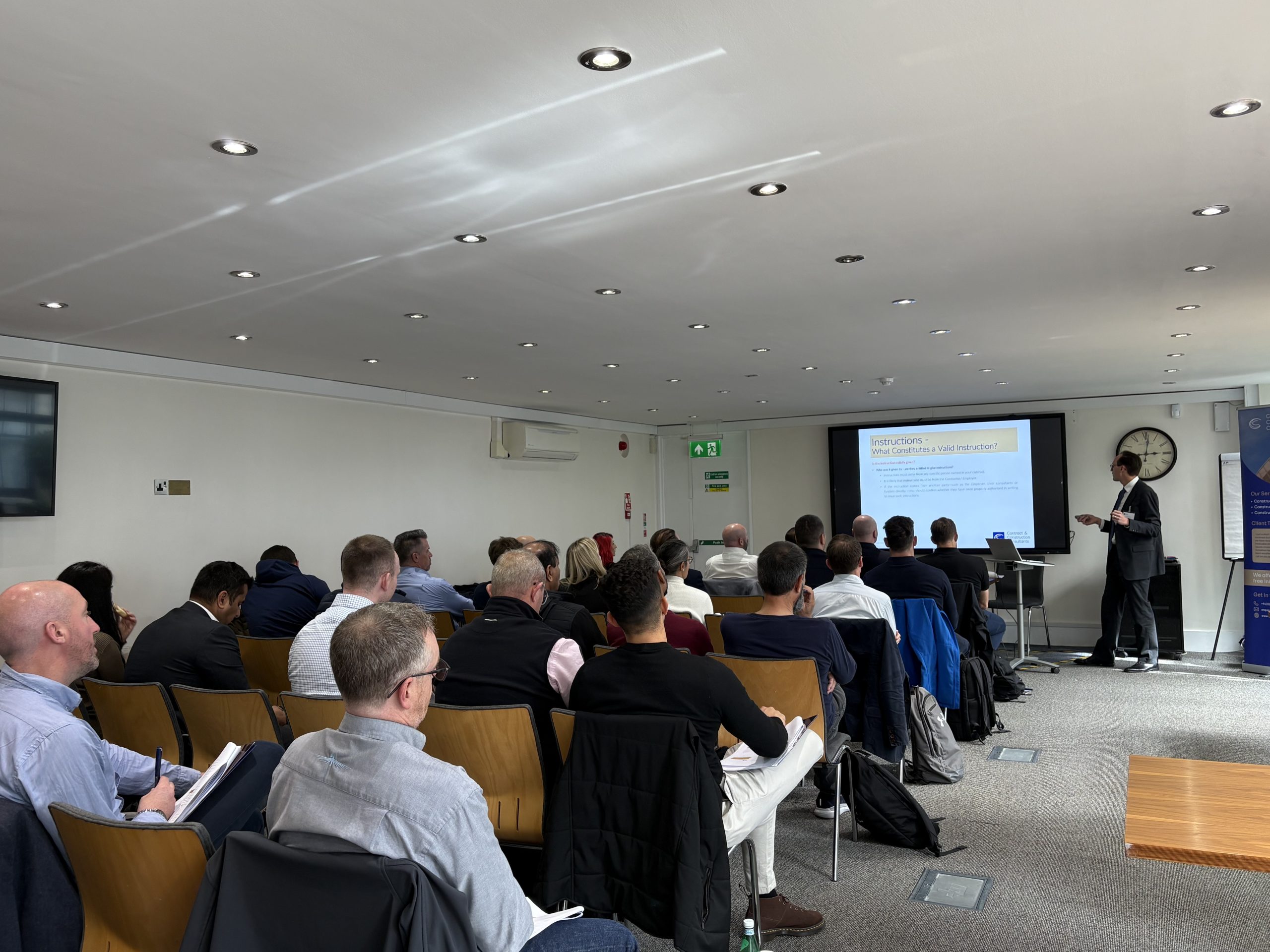Construction Case Law Update – Key TCC Decisions Shaping Risk, Disputes and Liability in 2025
As we pass the midpoint of 2025, the Technology and Construction Court (TCC) has delivered a series of judgments that clarify how construction risks are allocated, how disputes are resolved, and how liability may extend beyond the immediate contracting parties.
For contractors, subcontractors, and developers, these cases offer valuable insights into contract formation, adjudication rights, payment procedures, and statutory claims under the Building Safety Act and Defective Premises Act. Whether you’re pricing tenders, reviewing draft contracts, or responding to claims, the following updates are worth your attention.
Building Liability Orders: Piercing the Corporate Veil under the Building Safety Act
In 381 Southwark Park Road RTM Co Ltd v Click St Andrews Ltd [2024] EWHC 3179 (TCC), the Court granted one of the first Building Liability Orders (BLOs) under s130 of the Building Safety Act 2022 (BSA), offering clear guidance on this emerging statutory tool.
The claim followed an earlier judgment against Click St Andrews Ltd (an SPV freeholder) for fire safety and structural defects. With Click St Andrews in liquidation, the claimants sought to enforce the liability against its parent, Click Group Holdings.
The Court confirmed the conditions for a BLO were met:
- A “relevant liability” under the BSA existed due to serious safety defects.
- Click Group Holdings was “associated” within the meaning of the BSA, as it indirectly controlled the SPV.
- It was just and equitable to impose liability, given the SPV’s thin capitalisation and reliance on intra-group funding.
The Court dismissed procedural objections, confirming that a BLO can be granted even if the associated entity wasn’t originally named in pleadings, though it remains best practice to do so. Crucially, a BLO doesn’t need to specify a monetary sum: it may simply confirm that the associated company assumes the original party’s liability.
Key point: BLOs are a powerful recovery mechanism where the original developer is insolvent. The BSA now enables liability to follow economic reality, especially where group structures are used to isolate risk.
Adjudication Available for Defective Premises Act Claims
In BDW Trading Ltd v Ardmore Construction Ltd [2024] EWHC 3235 (TCC), the Court confirmed that statutory adjudication is available for claims under the Defective Premises Act 1972 (DPA), where the contract contains a broadly drafted dispute resolution clause.
BDW alleged DPA breaches in respect of poor workmanship and building regulation failures. Ardmore argued that DPA claims were outside the adjudicator’s jurisdiction. The TCC disagreed, holding that DPA claims can be adjudicated.
The relevant clause referred to disputes “arising under or in connection with” the subcontract—broad enough to capture DPA claims, which arose from the same factual matrix.
Why it matters: This judgment confirms that adjudication isn’t limited to contractual breaches. Statutory claims, especially those made under the DPA, may be subject to adjudication. This is particularly relevant given the BSA’s extension of the DPA’s limitation period (often to 15 or 30 years).
The case is on its way to the Court of Appeal, but for now, parties should assume DPA claims may be adjudicated.
Tender Clarifications Must Be Incorporated to Have Effect
In John Sisk & Son Ltd v Capital & Centric (Rose) Ltd [2025] EWHC 594 (TCC), the Court considered whether risk-shifting clarifications provided at tender stage were contractually binding.
The contractor relied on clarification notes included in the electronic contract bundle, which suggested the employer would bear the risk for an existing concrete frame. However, the hard copy contract, which was executed and signed, did not include those clarifications.
The Court found that the clarification notes were not incorporated. They were not listed in the contract’s document hierarchy or expressly referenced. As a result, risk allocation remained with the contractor.
Lesson for contractors: Tender clarifications, qualifications, and assumptions must be clearly and explicitly incorporated into the executed contract. Relying on electronic bundles or informal understandings is risky. If it’s not expressly included, it likely won’t be enforceable.
Payment Notices and Pay Less Notices: Timing Remains Everything
In Placefirst Construction Ltd v CAR Construction (North East) Ltd [2025] EWHC 100 (TCC), the Court revisited the procedural rules governing interim payments under the Housing Grants, Construction and Regeneration Act 1996 (as amended), specifically, whether a contractor’s interim application could constitute a valid payment notice, and whether a pay less notice served at or around the same time could still be effective.
The dispute turned on two questions:
- Whether CAR Construction’s interim application was a valid payment notice under section 110A(3); and
- Whether Placefirst’s pay less notice, served concurrently, complied with the statutory timing and content requirements.
The Court held that:
- The subcontractor’s application did qualify as a payment notice. While not explicitly labelled as such, it satisfied the core requirements: it was made by the payee, stated the sum considered due, and set out how that sum was calculated.
- The employer’s pay less notice, served shortly after the interim application, was also valid, provided it complied with the timing rules (i.e., issued no later than seven days before the final date for payment) and was clear in its intention to reduce or withhold payment.
This case reaffirms the need for precision and timing when navigating the Construction Act’s payment notice regime. While the statutory scheme does not prohibit a pay less notice being served in close proximity to a payment application, the notice must:
- Be clear that it is a pay less notice,
- State the amount the payer considers due and how it is calculated, and
- Be served within the permitted window.
Takeaway: Procedural compliance is critical. The judgment illustrates the increasingly technical nature of payment disputes, where arguments often turn not on whether sums are due in principle, but on the procedural validity of notices.
For employers and main contractors, the ruling provides some reassurance: a pay less notice will not be invalid merely because it closely follows a payment application, so long as it ticks all the formal boxes. However, any ambiguity, lateness, or failure to clearly label and explain the notice can lead to a ‘smash and grab’ scenario i.e. where the full amount applied for becomes payable by default.
For subcontractors, the case is a reminder that an interim application can double as a payment notice, but clarity remains key. Ambiguous applications or informal submissions may not trigger the statutory regime, weakening your position if payment is later withheld.
DPA Damages Go Beyond Repairs—But Only So Far
In Wilson & Ors v HB (SWA) Ltd [2025] EWHC 1315 (TCC), the Court clarified the scope of recoverable damages under the Defective Premises Act.
The question: Are damages limited to making a property “habitable”? The Court said no—reasonable consequential losses may also be recoverable, including:
- Alternative accommodation costs
- Foreseeable financial impacts
However, speculative or hypothetical losses were not allowed. These included:
- “Loss of capital”
- Inheritance tax planning losses
- Rental losses not actually pursued
Key principle: DPA damages can extend beyond repairs but must be grounded in real, foreseeable losses, not hindsight or lost opportunities.
Good Faith Clauses Do Not Create Open-Ended Duties
In Matière SAS v ABM Precast Solutions Ltd [2025] EWHC 1434 (TCC), the Court considered the limits of an express duty of good faith in a framework agreement.
The claimant argued that the defendant acted in bad faith by not progressing post-tender discussions. The Court rejected this, confirming:
- Good faith requires honesty and cooperation. It does not require parties to act against their commercial interests.
- The clause applied only to the tender process and did not extend to future negotiations or contracts.
Key takeaway: Express good faith clauses are narrowly construed. They do not impose wider duties to negotiate or contract unless expressly stated.
Key Takeaways for Construction Professionals
- Building Liability Orders may extend liability to parent companies where association is proven and it is just and equitable.
- DPA claims are adjudicable (at least for now!).
- Tender clarifications are worthless unless expressly incorporated into the signed contract.
- Payment and pay less notices must be clearly labelled, timed correctly, and contain required content—formality matters.
- DPA damages can cover more than repairs, but claims must be properly pleaded and substantiated.
- Good faith clauses do not impose duties to negotiate or contract and courts will not expand them beyond their context.
How CCC Can Help
At CCC, we advise contractors, subcontractors, developers, and consultants on all aspects of construction risk and dispute resolution. Whether you’re facing claims under the Building Safety Act or Defective Premises Act, navigating payment disputes, or reviewing contract documents, we provide:
- Strategic advice tailored to your commercial position
- Robust drafting support to reduce risk from the outset
- Practical representation in adjudication and pre-action negotiations
Get in touch to ensure your contracts, claims, and compliance strategies are up to date and effective.
Contact us for a free initial consultation.



